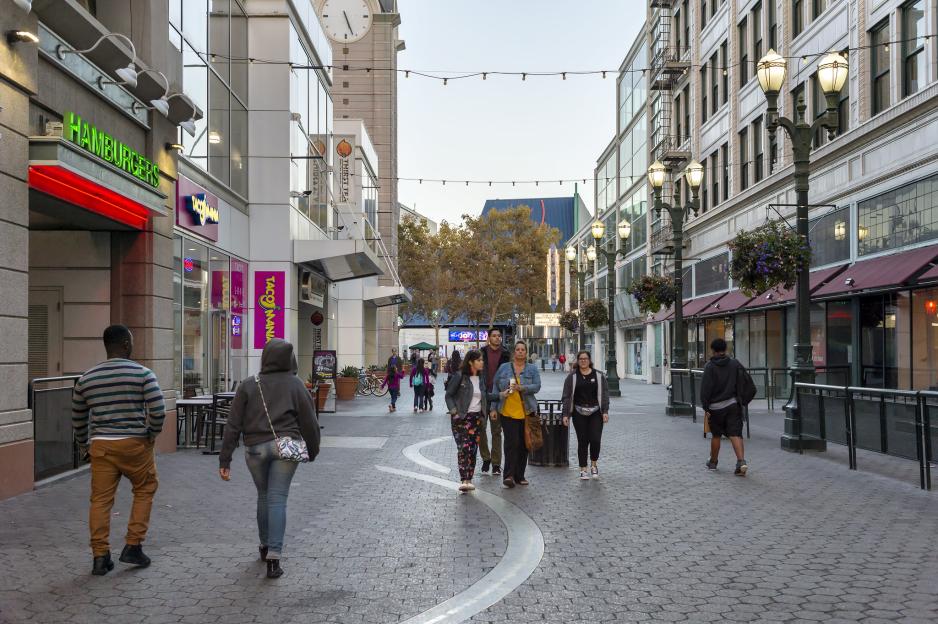Specialized zones for specific land uses can help bolster transit use and value in certain cases, such as for educational campuses, healthcare facilities, municipal functions, and even industrial sites. Although the operating characteristics of these uses may necessitate their separation from residential areas, they often occupy sites with enough land (typically 10 to 75 acres) to create buffers that are still comfortably navigable for walkers and wheelers in adjacent neighborhoods.
- Bring compatible uses within walking distance of each other by identifying and reducing inappropriately large single-use commercial, office, or industrial zones.
- Residential areas may also be reduced to attract neighborhood-serving commercial or office uses within walking distance of homes.
- Site larger compatible single-use areas within a district at site corners so that they are publicly visible, proximate to other uses, and more conveniently accessible.
- Site potentially incompatible uses centrally on their parcels, ringed by attractive and safe buffering space with pedestrian-scale amenities, such as well-lit public open spaces and landscaped plazas.
Body
